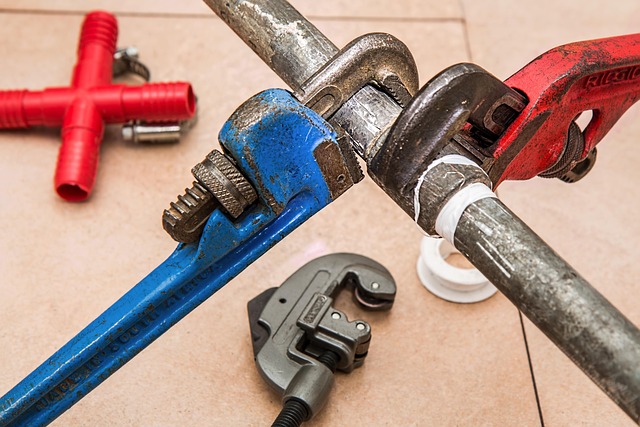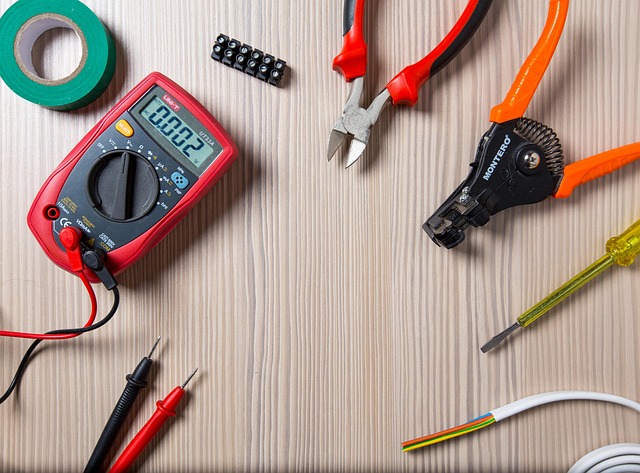Residential Foundation Repair starts with a comprehensive inspection using tools like moisture meters and cameras to identify cracks, unevenness, water intrusion, and soil conditions impacting foundation health. Early detection of signs like wall/floor cracks, stuck doors/windows, uneven floors, or sagging walls prevents extensive damage & costly repairs. Non-invasive tech like GPR & thermal imaging assist in early detection. Effective repair methods include underpinning, foundation replacement, piering systems, polymeric foam injections, & carbon fiber wraps. Regular maintenance, proper drainage, and trimming trees away from the foundation prevent issues. Case studies demonstrate successful strategies for various foundation problems.
Foundation damage inspection is a crucial step in ensuring the structural integrity and longevity of your home. This comprehensive guide delves into the intricacies of the inspection process, highlighting common signs of foundation problems, and exploring various repair methods. From non-invasive inspection techniques to the role of technology, we provide cost-effective solutions and offer insights on when to hire a professional. Additionally, learn about preventative measures to maintain your home’s foundation and successful case studies, all focused on residential foundation repair.
Understanding Foundation Damage Inspection Process

Understanding the process of foundation damage inspection is crucial for any homeowner facing potential issues with their residential foundation repair. This initial step involves a thorough examination of the basement, crawl space, or foundation level to identify signs of distress. Inspectors use various tools like moisture meters, cameras, and probes to detect cracks, unevenness, water intrusion, or other abnormality in the foundation structure.
During the inspection, professionals look for symptoms such as uneven floors, stuck doors or windows, visible cracks, or sagging walls, which could indicate foundation problems. They also assess the surrounding area, including soil conditions and drainage, as these factors play a significant role in foundation health. The data collected during this process forms the basis for recommending appropriate residential foundation repair solutions tailored to address the specific damage identified.
Common Signs of Foundation Problems in Residences

Many residential foundation problems go unnoticed until they’ve progressed significantly, making early detection crucial for effective and affordable residential foundation repair. Some common signs that indicate foundation issues include cracks in walls or floors, doors and windows that stick or don’t close properly, uneven floors, and bulging or leaning walls. These symptoms could point to various problems like settlement, heave, or shift, which are often caused by factors such as poor soil conditions, improper construction, or changes in the water table.
Regular inspections can help identify these signs early on, preventing further damage that may lead to costly and extensive residential foundation repair work. Homeowners should also be vigilant for signs of moisture intrusion, like stained or peeling paint, as this could indicate a crack in the foundation allowing water to seep in, exacerbating existing problems.
Types of Foundation Repair Methods for Homes

When it comes to addressing foundation damage in residential properties, various repair methods exist, each tailored to specific issues. The selection of a suitable approach is pivotal to ensure structural integrity and longevity of the home. One common technique involves underpinning, which includes strengthening the foundation by installing additional support beams or piles beneath the existing structure. This method is particularly effective for homes with settling or shifting foundations.
Another widely employed strategy is foundation replacement, wherein the damaged portions are completely removed and replaced with new foundation elements. This could range from repairing cracks and leaks to rebuilding sections of the foundation itself. For cases of severe settlement or heave, piering systems can be implemented. These involve installing steel piers at strategic points beneath the house, which then support the weight of the structure, effectively redistributing the load and stabilising the foundation. Each method has its merits and is chosen based on an expert inspection to provide optimal Residential Foundation Repair solutions.
Non-Invasive Inspection Techniques for Residential Foundations

Non-invasive inspection techniques offer a safe and effective way to assess residential foundation damage without causing further harm or instability. One popular method involves using advanced imaging technology, such as ground-penetrating radar (GPR), which can detect cracks, voids, and other issues beneath the surface of the foundation. This technology is non-destructive and provides detailed images for accurate analysis.
Another common approach is to employ thermal imaging cameras to identify temperature variations that may indicate hidden problems like settling or moisture intrusion. By comparing thermal signatures over time, inspectors can pinpoint areas of concern, enabling early detection of potential Residential Foundation Repair needs. These non-invasive techniques are invaluable tools in maintaining the structural integrity of homes and ensuring peace of mind for homeowners.
The Role of Technology in Foundation Damage Assessment

In the realm of residential foundation repair, technology plays a pivotal role in damage assessment. Advanced tools like drones and high-resolution cameras enable inspectors to navigate hard-to-reach areas with ease, providing detailed visual data for analysis. This aerial perspective aids in identifying cracks, shifting, or other signs of distress that may be missed during traditional inspections.
Moreover, modern software and AI algorithms can process this data quickly, offering precise measurements and patterns. This not only enhances accuracy but also expedites the entire inspection process. By leveraging these technological advancements, experts can offer more effective solutions for residential foundation repair, ensuring longevity and stability of homes.
Cost-Effective Solutions for Foundational Repairs

When it comes to addressing foundation damage, especially in residential properties, there are several cost-effective solutions available that can restore structural integrity and prevent further deterioration. One popular option is the use of polymeric foam injections, which effectively fill cracks and voids, offering a long-lasting repair without extensive excavation or replacement. This method not only saves on labor costs but also minimizes disruption to the property and its surroundings.
Additionally, carbon fiber wraps have gained popularity for their durability and affordability. By wrapping the affected areas, these wraps strengthen the foundation, preventing further expansion of cracks. This solution is particularly advantageous for smaller repairs and can be easily integrated into existing construction, making it a practical choice for many homeowners looking to address residential foundation repair needs efficiently and economically.
When to Hire a Professional for Foundation Issues

If you’re noticing signs of foundation damage in your home, such as cracks in walls or uneven floors, it’s crucial to address the issue promptly. While some minor problems might be fixable with DIY methods, more severe foundation issues often require professional expertise for safe and effective Residential Foundation Repair.
Hiring a licensed and experienced contractor is essential when dealing with potential structural integrity concerns. Professionals have the tools and knowledge to accurately diagnose the cause of the damage and provide tailored solutions. Ignoring foundation problems can lead to further complications and costlier repairs down the line, making proactive measures and professional intervention a wise decision for maintaining your home’s value and safety.
Preventative Measures: Maintaining Your Home's Foundation

Regular maintenance is key to preventing foundation damage, which can be costly and disruptive. Homeowners should inspect their property for any signs of shifting or cracks, addressing them promptly. Moisture control is crucial; ensure proper drainage around your home and fix any leaks immediately. Tree roots can also cause structural issues, so trimming trees away from the foundation is essential.
Additionally, maintaining a safe distance between your home’s foundation and construction materials like wood or compost can prevent potential damage. Regularly checking and adjusting downspouts to ensure water is directed away from the house is another effective preventative measure for residential foundation repair.
Case Studies: Successful Residential Foundation Repair

In the realm of Residential Foundation Repair, case studies offer invaluable insights into successful interventions. One notable example involves a home built on loose soil, which led to significant settling over time. Experts addressed the issue by implementing a deep foundation repair system, including piering and underpinning. This comprehensive approach not only stabilized the structure but also prevented further damage, serving as a shining example of effective residential foundation repair methods.
Another successful case highlights the restoration of an older home with a damaged basement. By diagnosing the problem as hydrostatic pressure from nearby water sources, professionals employed advanced waterproofing techniques and interior drainage systems. These measures not only fixed the existing damage but also safeguarded the structure against future moisture-related complications, demonstrating the multifaceted benefits of well-executed residential foundation repair strategies.
